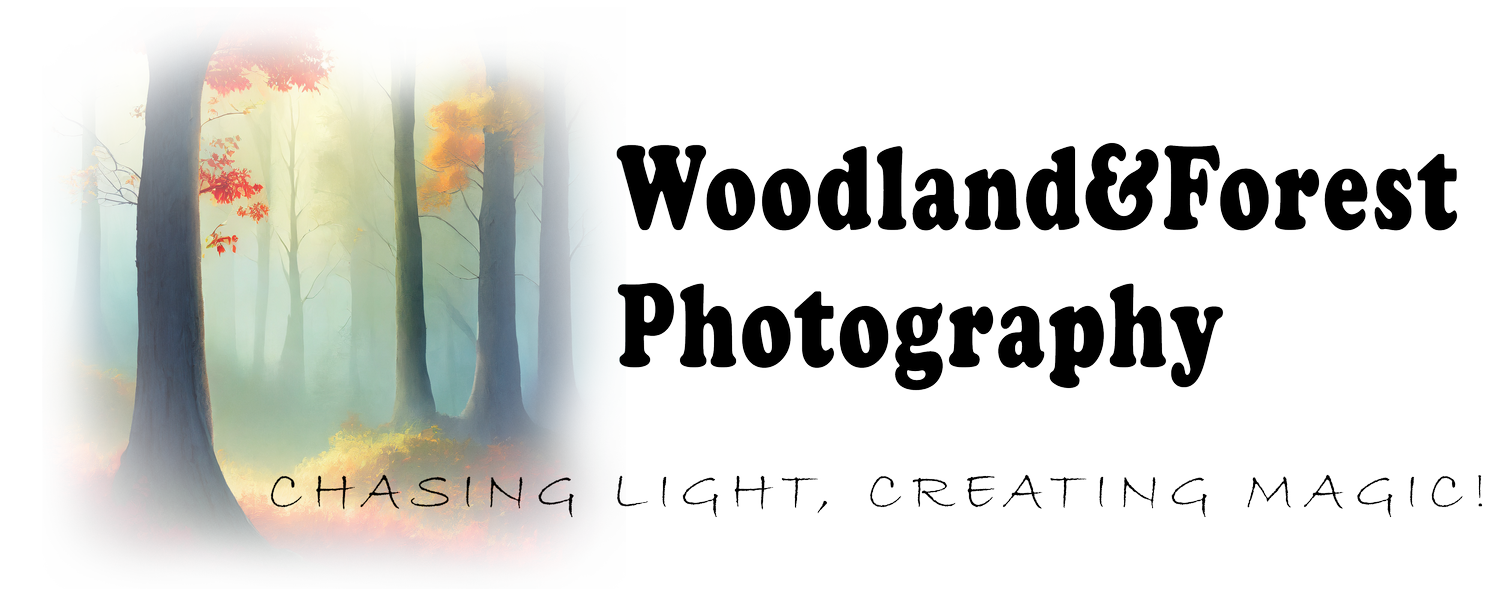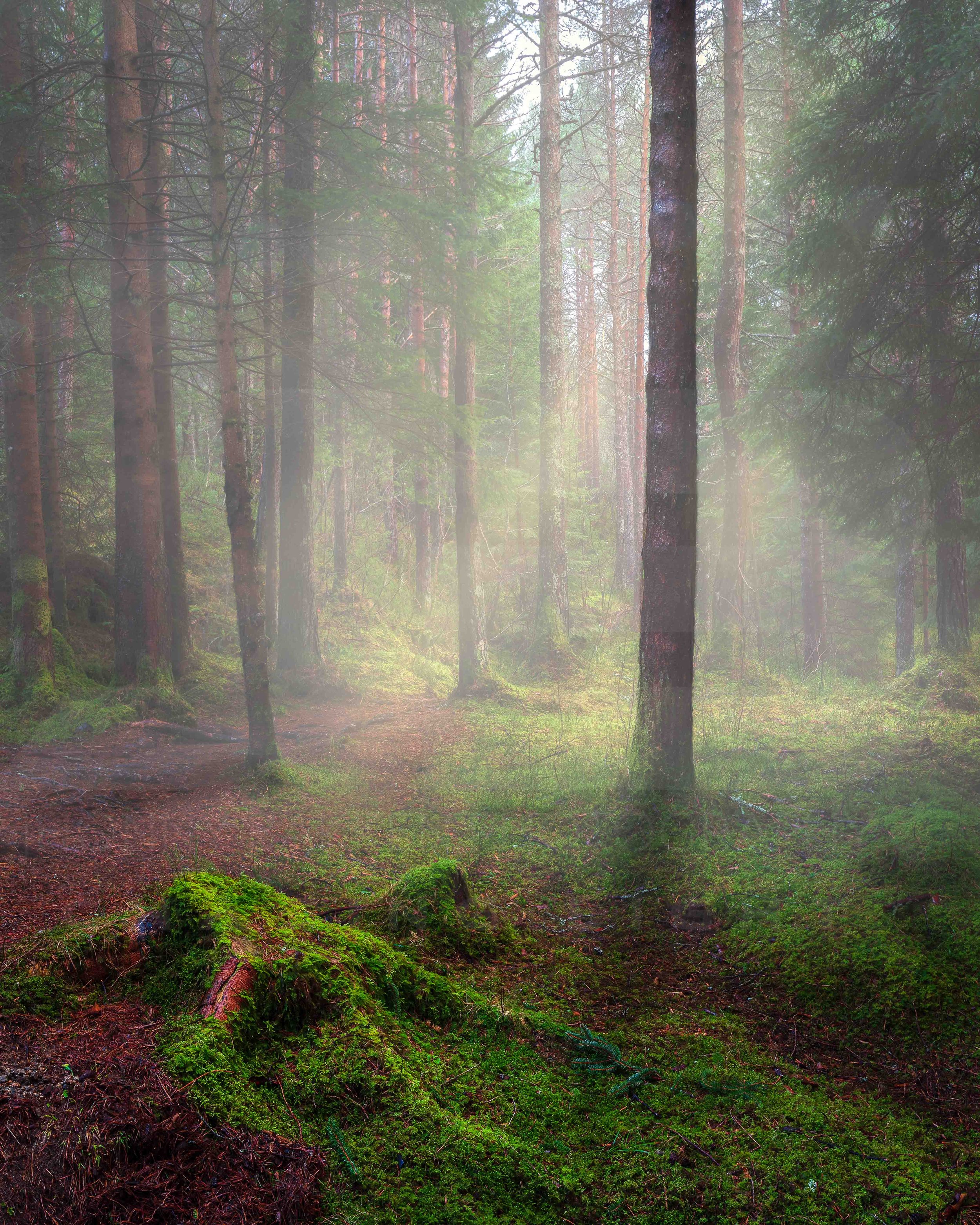Woodland & Forest Photography
Bringing the Beauty of Woodlands and Forests to Life
January 27, 2024
WEEKLY NEWSLETTER
Dear Photography Enthusiasts,
Welcome to the latest edition of the Woodland and Forest Photography Newsletter, where I share tips, tricks, and inspiration for capturing the beauty of nature.
Image composition is the art of arranging the elements in a scene in a way that creates a pleasing and meaningful image. It is one of the most important skills for any photographer, whether you are a beginner or a professional. In this newsletter, we will explore some tips and techniques for finding and deciding on a image composition, finding the best angle to make your image stand out from the rest, using the photographic rules or not, and why pre-visualizing your image will help you framing up the image.
FINDING AND DECIDING ON AN IMAGE COMPOSITION:
The first step in creating a good image composition is to have a vision of what you want to capture and convey. This is called pre-visualization, and it involves imagining the final image in your mind before you even take the shot. Pre-visualization can help you refine your story, create a blueprint, save time and money, and avoid common mistakes. You can also use tools such as storyboards, shot lists, sketches, or photographs to help you pre-visualize your image.
Once you have a vision, you need to find a suitable subject and background for your image. You can look for interesting shapes, colors, textures, patterns, contrasts, or emotions that catch your eye. You can also use the rule of thirds, which is a guideline that divides the image into nine equal parts using two horizontal and two vertical lines. The idea is to place the main subject or point of interest along these lines or at their intersections, as this creates a more balanced and dynamic composition. However, you can also break the rule of thirds and experiment with different placements, as long as they serve your vision and message.
FINDING THE BEST ANGLE TO MAKE YOUR IMAGE STAND OUT:
Another factor that can make a big difference in your image composition is the angle or perspective from which you shoot. The angle can affect the mood, the depth, the scale, the focus, and the impact of your image. For example, you can shoot from below to make your subject look more powerful, dominant, or imposing. You can shoot from above to make your subject look smaller, vulnerable, or insignificant. You can shoot from the side to create a sense of movement, direction, or action. You can shoot from the front to create a sense of intimacy, connection, or confrontation. You can also tilt your camera to create a sense of imbalance, tension, or dynamism.
The best angle to choose depends on your vision and message, as well as the characteristics of your subject and background. You can try different angles and see how they affect your image composition. You can also use tools such as a tripod, a monopod, a drone, or a selfie stick to help you achieve different angles. The key is to be creative and experiment with different possibilities.
USING THE PHOTOGRAPHIC RULES OR NOT:
There are many photographic rules or guidelines that can help you improve your image composition, such as the rule of thirds, the golden ratio, the golden triangles, the rule of space, the rule of odds, the rule of symmetry, and so on. These rules are based on principles of aesthetics, psychology, and mathematics that have been used in art and architecture for centuries. They can help you create images that are more harmonious, balanced, pleasing, and effective.
However, these rules are not meant to be followed blindly or rigidly. They are not laws that you have to obey, but tools that you can use or ignore depending on your vision and message. Sometimes, breaking the rules can create more interesting, original, or powerful images. For example, you can place your subject in the center of the frame to create a sense of stability, importance, or isolation. You can fill the frame with your subject to create a sense of intimacy, detail, or drama. You can leave negative space around your subject to create a sense of simplicity, minimalism, or mystery.
The important thing is to know the rules and understand why and how they work, but also to know when and how to break them. You should always make conscious decisions based on your vision and message, not on what the rules say.
WHY PRE-VISUALIZING YOUR IMAGE WILL HELP FRAMING UP YOUR IMAGE:
As we have seen, pre-visualizing your image is a crucial step in creating a good image composition. It can help you find and decide on a image composition, find the best angle to make your image stand out, and use or break the photographic rules. But how does pre-visualizing your image help you framing up the image?
Framing up the image means adjusting the position, the zoom, the focus, and the exposure of your camera to capture the image that you have pre-visualized in your mind. By pre-visualizing your image, you have a clear idea of what you want to include or exclude in your frame, what you want to emphasize or de-emphasize, what you want to show or hide, and what you want to say or imply. This makes it easier and faster to frame up the image, as you don't have to waste time or miss opportunities by trying different options or making mistakes.
Pre-visualizing your image also helps you framing up the image by giving you a sense of direction, purpose, and confidence. You know what you are doing and why you are doing it. You are not shooting randomly or blindly, but intentionally and deliberately. You are not hoping for a good shot, but creating a good shot. You are not taking a picture, but making a picture.
By doing this, you will discover new possibilities and potentials in your photography. You will also have more fun and less stress, as you will not be bound by any expectations or limitations.
CONCLUSION:
Image composition is the art of arranging the elements in a scene in a way that creates a pleasing and meaningful image. It is one of the most important skills for any photographer, whether you are a beginner or a professional. In this newsletter, we have learned some tips and techniques for finding and deciding on an image composition, finding the best angle to make your image stand out from the rest, using the photographic rules or not, and why pre-visualizing your image will help you framing up the image.
How do you pre-visualize your images? Do you use any tools or methods to help you? Do you have any examples of images that you have pre-visualized and framed up?
I hope you enjoyed this issue of the Woodland Photography Newsletter, and that you learned something new and useful for your woodland photography. I would love to see your woodland images, so please feel free to share them with me on my social media channels. Remember, every picture has a tale, and each tale can motivate and charm. Let's collaborate to keep spreading the amazing marvels of nature with the world.
Until next time, happy shooting. If you have any questions, comments, or feedback, please feel free to contact us.
PS: What’s the #1 thing that made you want to check out my newsletter? Reply and let me know. I read every reply.
Sincerely,
Jhonny Bakken
Founder, Woodland & Forest Photography
Woodland & Forest Photography,
Nygjerdet 14, 6030 Langevåg
Møre og Romsdal
NORWAY




